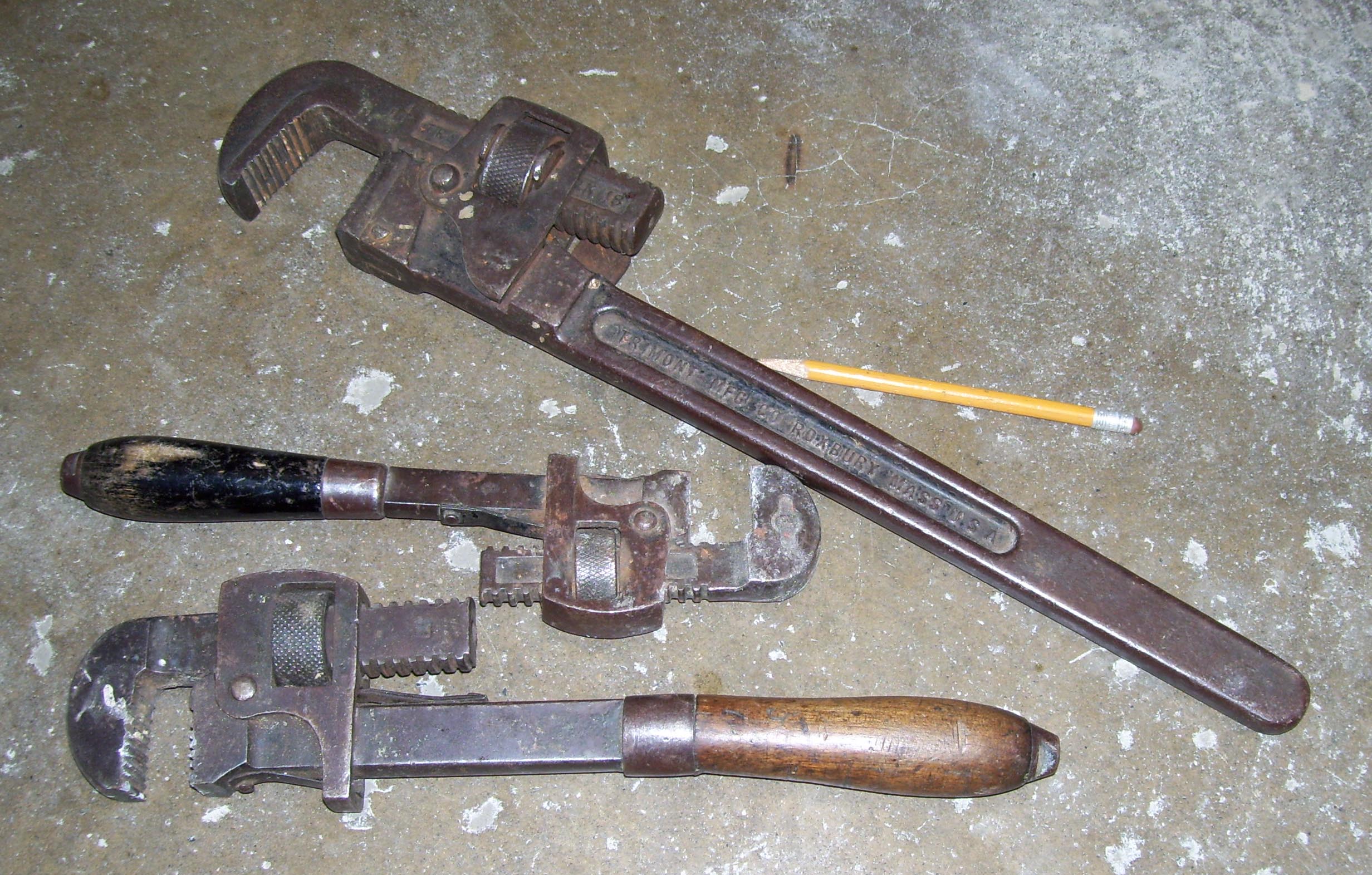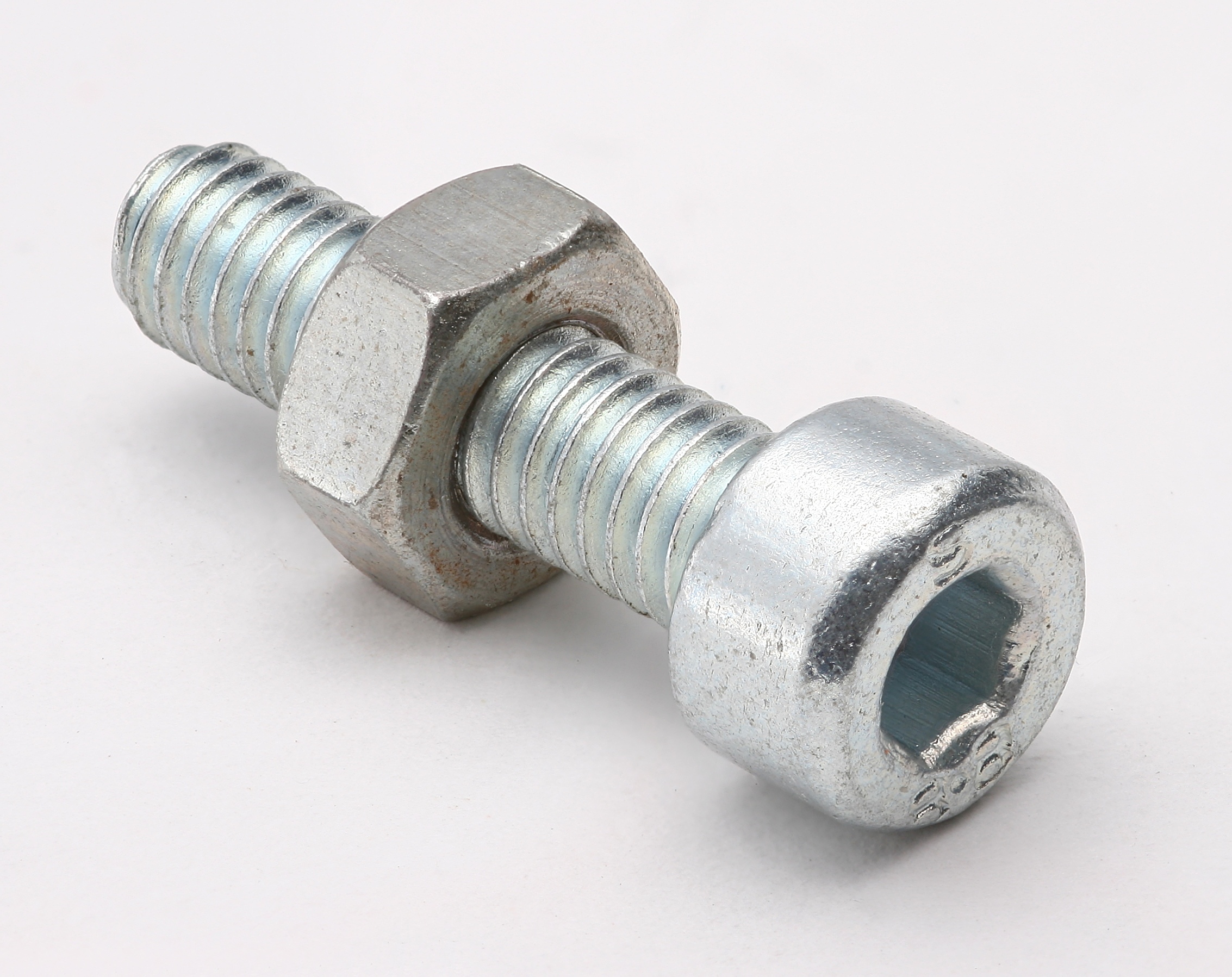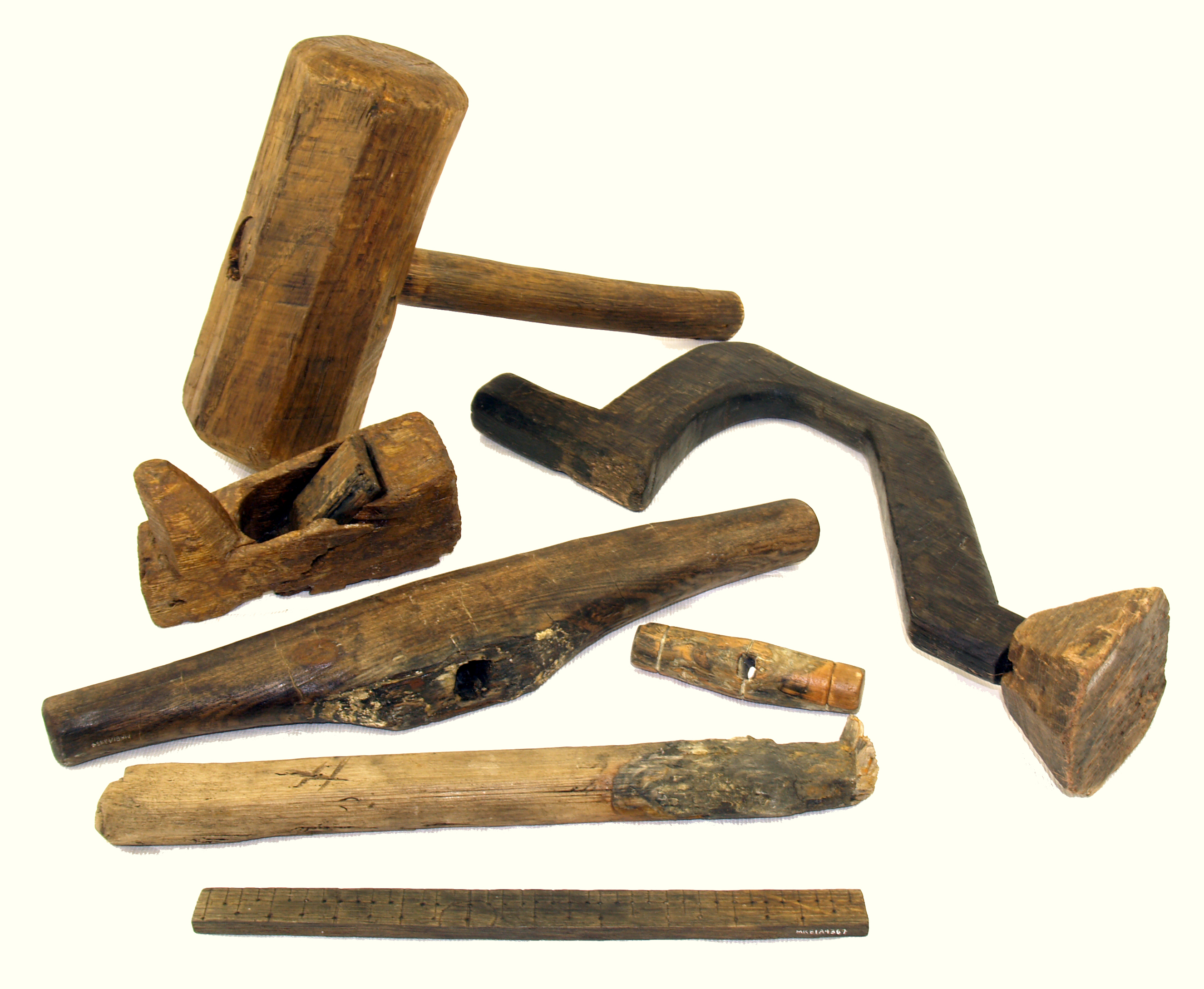|
Wrench
A wrench or spanner is a tool used to provide grip and mechanical advantage in applying torque to turn objects—usually rotary fasteners, such as nuts and bolts—or keep them from turning. In the UK, Ireland, Australia, and New Zealand ''spanner'' is the standard term. The most common shapes are called ''open-ended spanner'' and ''ring spanner''. The term ''wrench'' is generally used for tools that turn non-fastening devices (e.g. tap wrench and pipe wrench), or may be used for a monkey wrench—an adjustable pipe wrench. In North American English, ''wrench'' is the standard term. The most common shapes are called ''open-end wrench'' and ''box-end wrench''. In American English, ''spanner'' refers to a specialized wrench with a series of pins or tabs around the circumference. (These pins or tabs fit into the holes or notches cut into the object to be turned). In American commerce, such a wrench may be called a ''spanner wrench'' to distinguish it from the British sense ... [...More Info...] [...Related Items...] OR: [Wikipedia] [Google] [Baidu] |
Monkey Wrench
A monkey wrench is a type of smooth-jawed adjustable wrench, a 19th century American refinement of 18th-century English coach wrenches. It was widely used in the 19th and early 20th century. It is of interest as an antique among tool collectors and is still occasionally used in practice. More broadly, a ''monkey wrench'' may be a pipe wrench or any other kind of adjustable wrench. Etymology and history Adjustable coach wrenches for the odd-sized nuts of wagon wheels were manufactured in England and exported to North America in the late 18th and early 19th centuries. They were set either by sliding a wedge, or later by twisting the handle, which turned a screw, narrowing or widening the jaws. In 1840, Loring Coes, a knife manufacturer in Worcester, Massachusetts, invented a screw-based coach wrench design in which the jaw width was set with a spinning ring fixed under the sliding lower jaw, above the handle. This was patented in 1841 and the tools were advertised and sold in ... [...More Info...] [...Related Items...] OR: [Wikipedia] [Google] [Baidu] |
Pipe Wrench
A pipe wrench is any of several types of wrench that are designed to turn threaded pipe and pipe fittings for assembly (tightening) or disassembly (loosening). The Stillson wrench, or Stillson-pattern wrench, is the usual form of pipe wrench, especially in the US. The Stillson name is that of the original patent holder, who licensed the design to a number of manufacturers; the patent has since expired. A different type of wrench with compound leverage often used on pipes, the plumber wrench, is also called a "pipe wrench" in some places. Description The Stillson wrench is an adjustable wrench (spanner) with hardened serrated teeth on its jaws. The hard teeth bite into the softer metal of the round pipe and provide the grip needed to turn a pipe, even against fair resistance. The design of the adjustable jaw, which permits a certain amount of intentional play out of square, allows it to bind on the pipe, with forward pressure on the handle pulling the jaws tighter. On some mod ... [...More Info...] [...Related Items...] OR: [Wikipedia] [Google] [Baidu] |
Plumber Wrench
A plumber wrench (or plumber's wrench, pipe wrench, Swedish wrench or Swedish pattern wrench) is a form of plier described as a pipe wrench that uses compound leverage to grip and rotate plumbing pipes. Similar to the action of a locking pliers, Vise Grip plier, its jaw opening is adjusted to width by rotating a threaded ring. Its advantage is that it grips with significant force without needing to engage a lock nut like an adjustable Tongue-and-groove pliers, tongue-and-groove plier. Like these, it can also be used on nuts, particularly hex shaped, and other flat engagement points. If used carelessly it can dent or break plumbing pipe. History The plumber wrench was invented in 1888 by the Sweden, Swedish inventor named Johan Petter Johansson. It shares some principles with both the Stillson wrench, Stillson-pattern pipe wrench and the rigid pipe wrench, as well as various forms of adjustable pliers, such as the locking pliers, Vise Grip and "Channelock" tongue-and-groove p ... [...More Info...] [...Related Items...] OR: [Wikipedia] [Google] [Baidu] |
Torque
In physics and mechanics, torque is the rotational analogue of linear force. It is also referred to as the moment of force (also abbreviated to moment). The symbol for torque is typically \boldsymbol\tau, the lowercase Greek letter ''tau''. When being referred to as moment of force, it is commonly denoted by . Just as a linear force is a push or a pull applied to a body, a torque can be thought of as a twist applied to an object with respect to a chosen point; for example, driving a screw uses torque to force it into an object, which is applied by the screwdriver rotating around its axis to the drives on the head. Historical terminology The term ''torque'' (from Latin , 'to twist') is said to have been suggested by James Thomson and appeared in print in April, 1884. Usage is attested the same year by Silvanus P. Thompson in the first edition of ''Dynamo-Electric Machinery''. Thompson describes his usage of the term as follows: Today, torque is referred to using d ... [...More Info...] [...Related Items...] OR: [Wikipedia] [Google] [Baidu] |
Screw
A screw is an externally helical threaded fastener capable of being tightened or released by a twisting force (torque) to the screw head, head. The most common uses of screws are to hold objects together and there are many forms for a variety of materials. Screws might be inserted into holes in assembled parts or a screw may form its own thread. The #Differentiation between bolt and screw, difference between a screw and a bolt is that the latter is designed to be tightened or released by torquing a Nut (hardware), nut. The screw head on one end has a slot or other feature that commonly requires a tool to transfer the twisting force. Common tools for driving screws include screwdrivers, wrenches, coins and hex keys. The head is usually larger than the body, which provides a ''bearing surface'' and keeps the screw from being driven deeper than its length; an exception being the ''set screw'' (aka grub screw). The cylindrical portion of the screw from the underside of the head t ... [...More Info...] [...Related Items...] OR: [Wikipedia] [Google] [Baidu] |
Gedore No
Gedore or Gedore Tool Group, is a global conglomerate of production and sale companies specialising in hand tools and other tool-making items. The company was founded in 1919 as ''Gedore Werkzeugfabrik Otto Dowidat KG'' by the three Dowidat brothers, Otto, Karl and Willi, who started the manufacturing of hand tools for industry from their hometown of Remscheid in Germany. The company name ''Gedore'' is an acronym of ''GEbrüder DOwidat REmscheid''. In the 1960s the company began a policy of investing abroad and has since grown into a global organisation. The Group operates seven production facilities with manufacturing operations in Germany, Austria, the United Kingdom, Turkey, Brazil and South Africa. The Group also has ten sales companies in various countries responsible for the marketing and distribution of its products. The Group employs around 2,000 people worldwide, including approximately 900 staff in Germany. The tool manufacturer has two product lines under the Ged ... [...More Info...] [...Related Items...] OR: [Wikipedia] [Google] [Baidu] |
Nut (hardware)
A nut is a type of fastener with a screw thread, threaded hole. Nuts are almost always used in conjunction with a mating bolt (fastener), bolt to fasten multiple parts together. The two partners are kept together by a combination of their threads' friction with slight deformation (engineering)#Elastic deformation, elastic deformation, a slight Tension (physics), stretching of the bolt, and compression (physics), compression of the parts to be held together. In applications where vibration or rotation may work a nut loose, various locking mechanisms may be employed: lock washers, jam nuts, eccentric double nuts, specialist adhesive thread-locking fluid such as Loctite, safety pins (split pins) or lockwire in conjunction with castellated nuts, nylon inserts (nyloc nut), or slightly oval-shaped threads. Square nuts, as well as bolt heads, were the first shape made and used to be the most common largely because they were much easier to manufacture, especially by hand. While rare toda ... [...More Info...] [...Related Items...] OR: [Wikipedia] [Google] [Baidu] |
Locking Pliers
Locking pliers (also called Vise-Grips, Mole wrench or Mole grips) are pliers that can be locked into position, using an "over-center" cam action. Locking pliers are available with many different jaw styles, such as needle-nose pliers, wrenches, clamps and various shapes to fix metal parts for welding. They also come in many sizes. History The first locking pliers, with the trade name Vise-Grip, were invented by William S. Petersen in De Witt, Nebraska, United States in 1924. Later, in 1955, in the United Kingdom, M K Mole and Son, a hand tool manufacturing company, under the managing direction of Thomas Coughtrie, began making nearly identical pliers. Etymology In the United States, the brand name "''Vise-Grips''" is close to a generic name for this type of pliers. The same is true in the United Kingdom of the brand name "''Mole Wrench''". The spelling "''vise''" is mentioned in Samuel Johnson's 1755 dictionary. This spelling is orthodox in the United States. The sp ... [...More Info...] [...Related Items...] OR: [Wikipedia] [Google] [Baidu] |
Tool
A tool is an Physical object, object that can extend an individual's ability to modify features of the surrounding environment or help them accomplish a particular task. Although many Tool use by animals, animals use simple tools, only human beings, whose use of stone tools dates back hundreds of millennia, have been observed using tools to make other tools. Early human tools, made of such materials as Rock (geology), stone, bone, and wood, were used for the preparation of food, hunting, the manufacture of weapons, and the working of materials to produce clothing and useful Cultural artifact, artifacts and crafts such as pottery, along with the construction of housing, businesses, infrastructure, and transportation. The development of metalworking made additional types of tools possible. Harnessing energy sources, such as Working animal, animal power, wind, or steam, allowed increasingly complex tools to produce an even larger range of items, with the Industrial Revolution markin ... [...More Info...] [...Related Items...] OR: [Wikipedia] [Google] [Baidu] |
Wheel-lock
A wheellock, wheel-lock, or wheel lock is a friction-wheel mechanism which creates a spark that causes a firearm to fire. It was the next major development in firearms technology after the matchlock, and the first self-igniting firearm. Its name is from its rotating steel wheel to provide ignition. Developed in Europe around 1500, it was used alongside the matchlock (), the snaplock (), the snaphance (), and the flintlock (). Design The wheellock works by spinning a spring-loaded steel wheel against a piece of pyrite to generate intense sparks, which ignite gunpowder in a pan, which flashes through a small touchhole to ignite the main charge in the firearm's barrel. The pyrite is clamped in vise jaws on a spring-loaded arm (or 'dog'), which rests on the pan cover. When the trigger is pulled, the pan cover is opened, and the wheel is rotated, with the pyrite pressed into contact. A close modern analogy of the wheellock mechanism is the operation of a lighter, where a toothed st ... [...More Info...] [...Related Items...] OR: [Wikipedia] [Google] [Baidu] |
Fastener
A fastener (US English) or fastening (UK English) is a hardware device that mechanically joins or affixes two or more objects together. In general, fasteners are used to create non-permanent joints; that is, joints that can be removed or dismantled without damaging the joining components. Steel fasteners are usually made of stainless steel, carbon steel, or alloy steel. Other methods of joining materials, some of which may create permanent joints, include: crimping, welding, soldering, brazing, taping, gluing, cement, or the use of other adhesives. Force may also be used, such as with magnets, vacuum (like suction cups), or even friction (like sticky pads). Some types of woodworking joints make use of separate internal reinforcements, such as dowels or biscuits, which in a sense can be considered fasteners within the scope of the joint system, although on their own they are not general-purpose fasteners. Furniture supplied in flat-pack form often uses cam dowels lock ... [...More Info...] [...Related Items...] OR: [Wikipedia] [Google] [Baidu] |
American English
American English, sometimes called United States English or U.S. English, is the set of variety (linguistics), varieties of the English language native to the United States. English is the Languages of the United States, most widely spoken language in the United States and, since 2025, the official language of the United States. It is also an official language in 32 of the 50 U.S. states and the ''de facto'' common language used in government, education, and commerce in all 50 states, the District of Columbia, and in all territories except Puerto Rico. Since the late 20th century, American English has become the most influential form of English worldwide. Varieties of American English include many patterns of pronunciation, vocabulary, grammar, and particularly spelling that are unified nationwide but distinct from other forms of English around the world. Any North American English, American or Canadian accent perceived as lacking noticeably local, ethnic, or cultural markedness ... [...More Info...] [...Related Items...] OR: [Wikipedia] [Google] [Baidu] |







